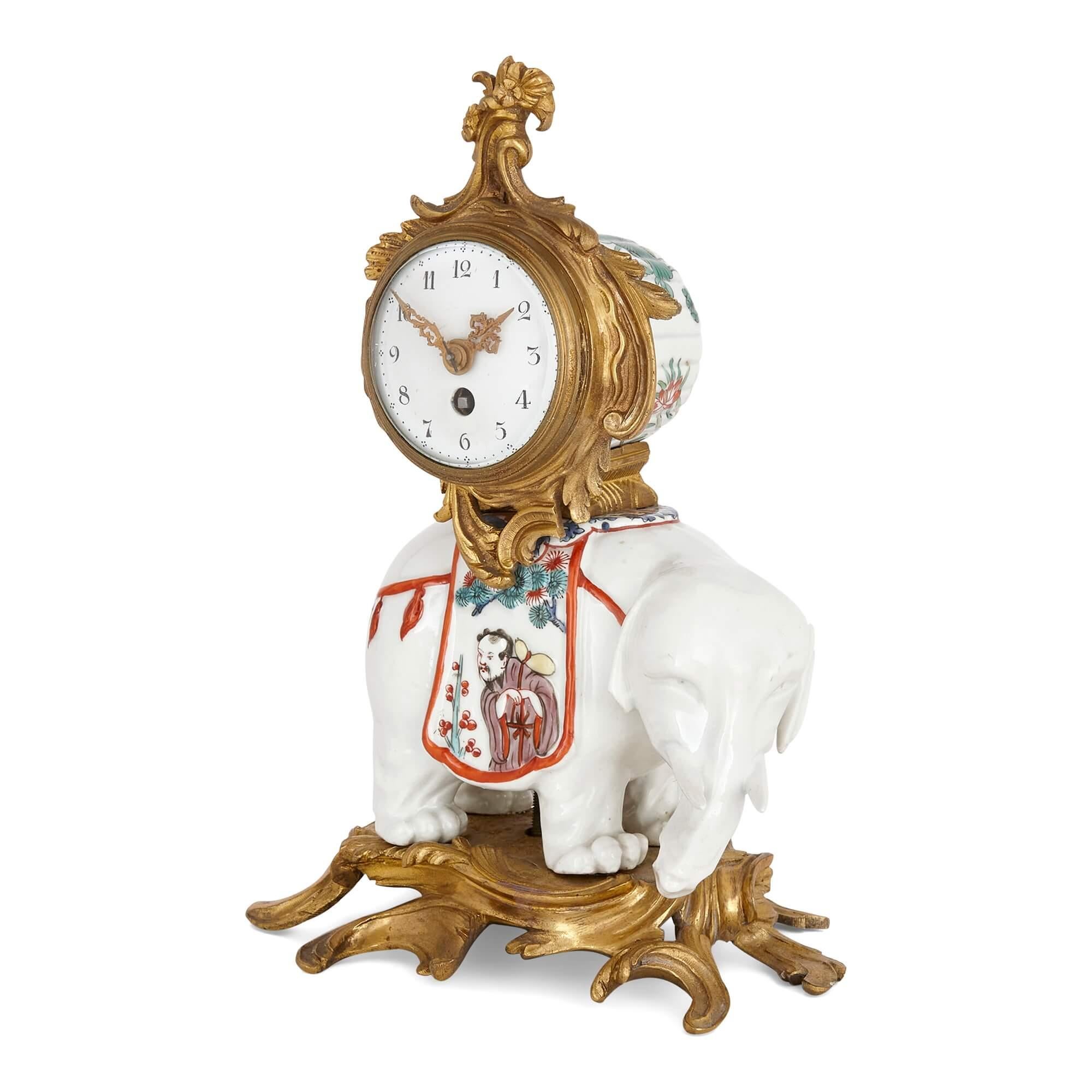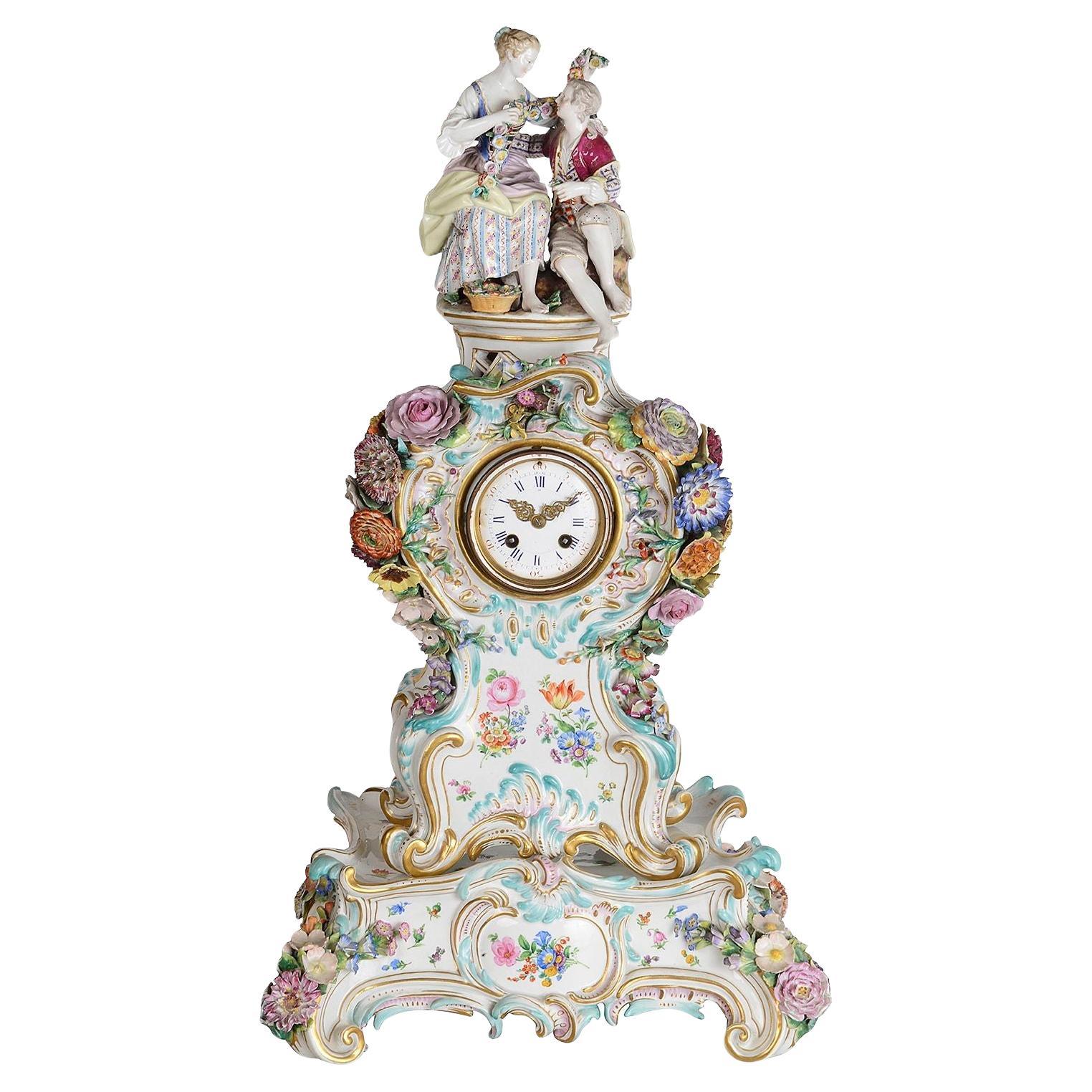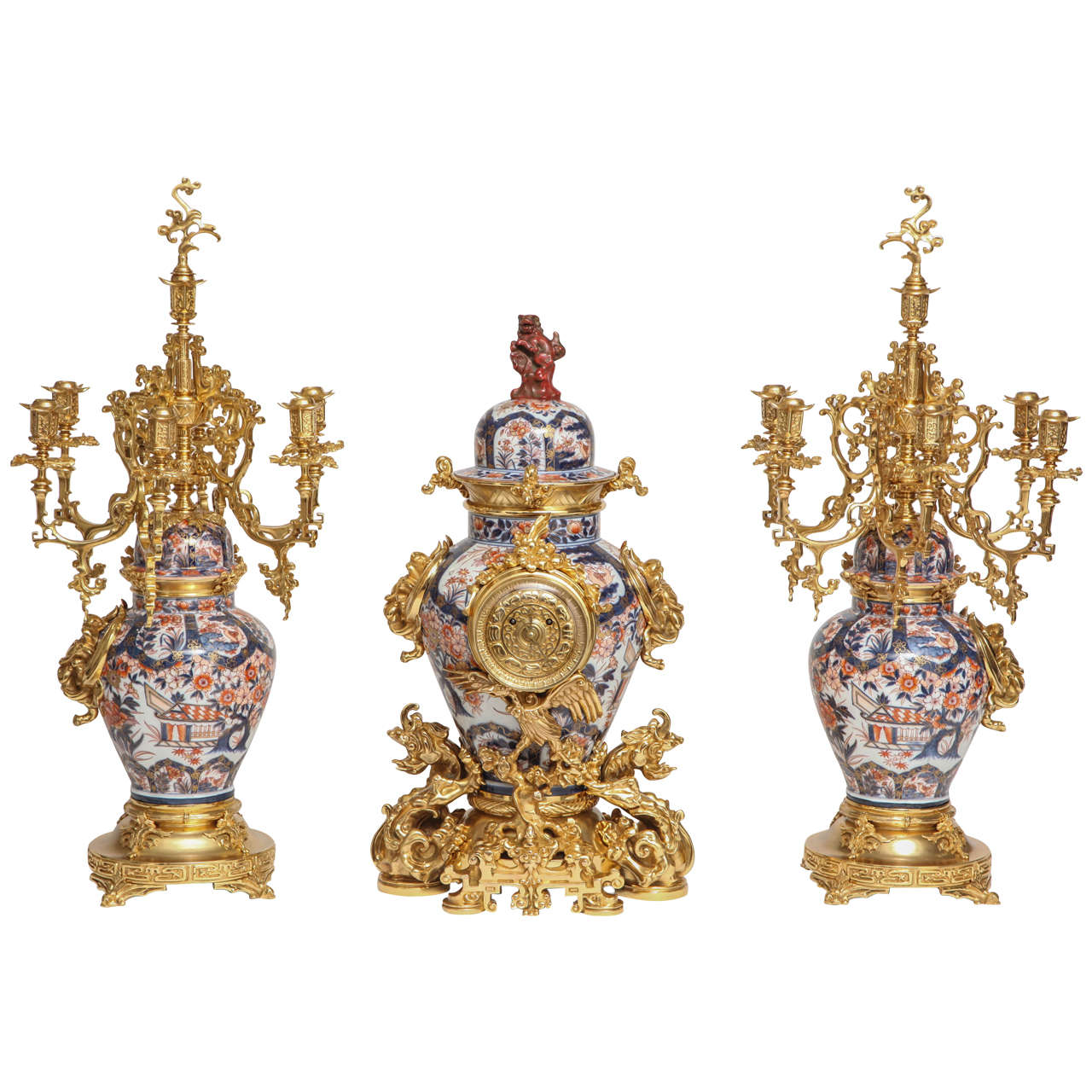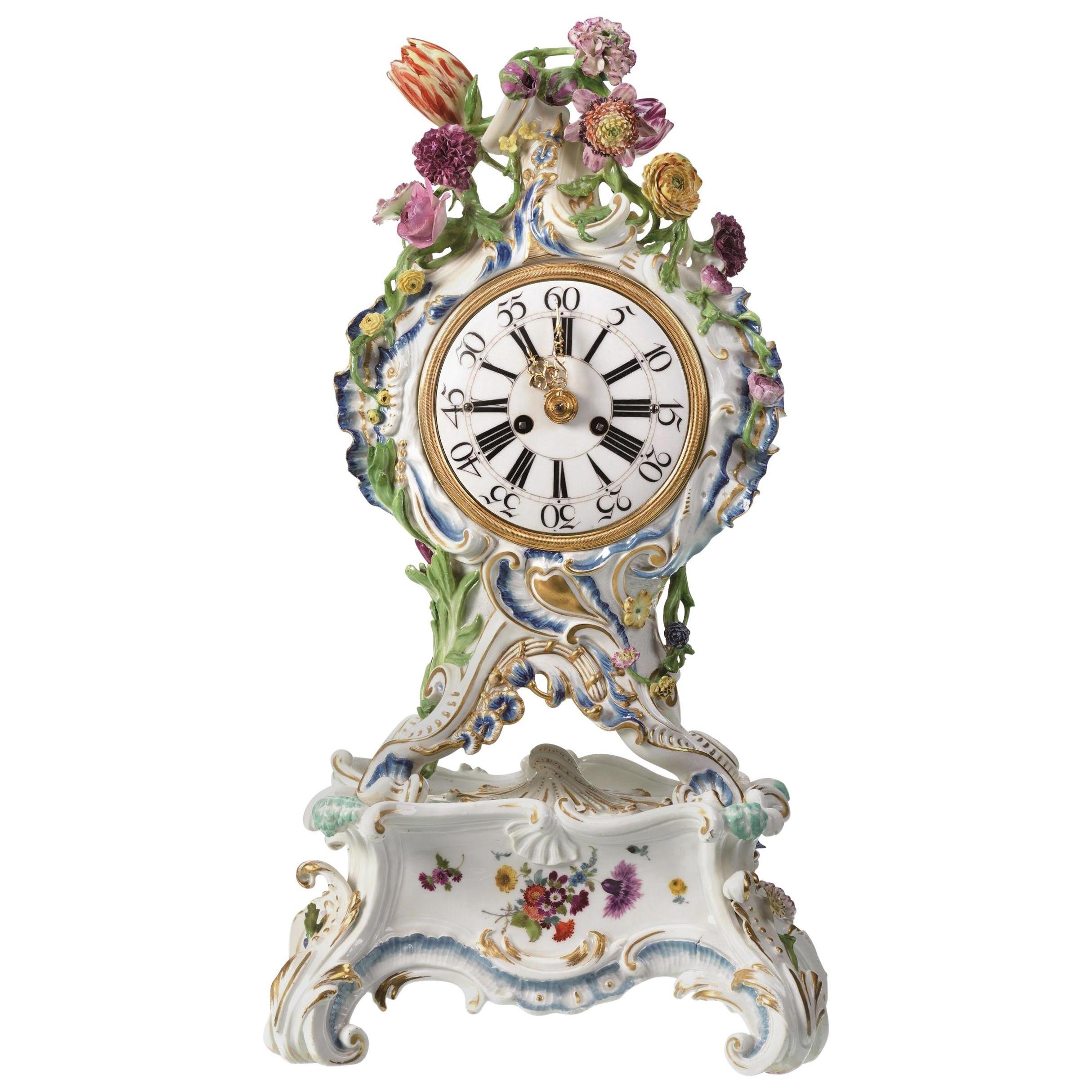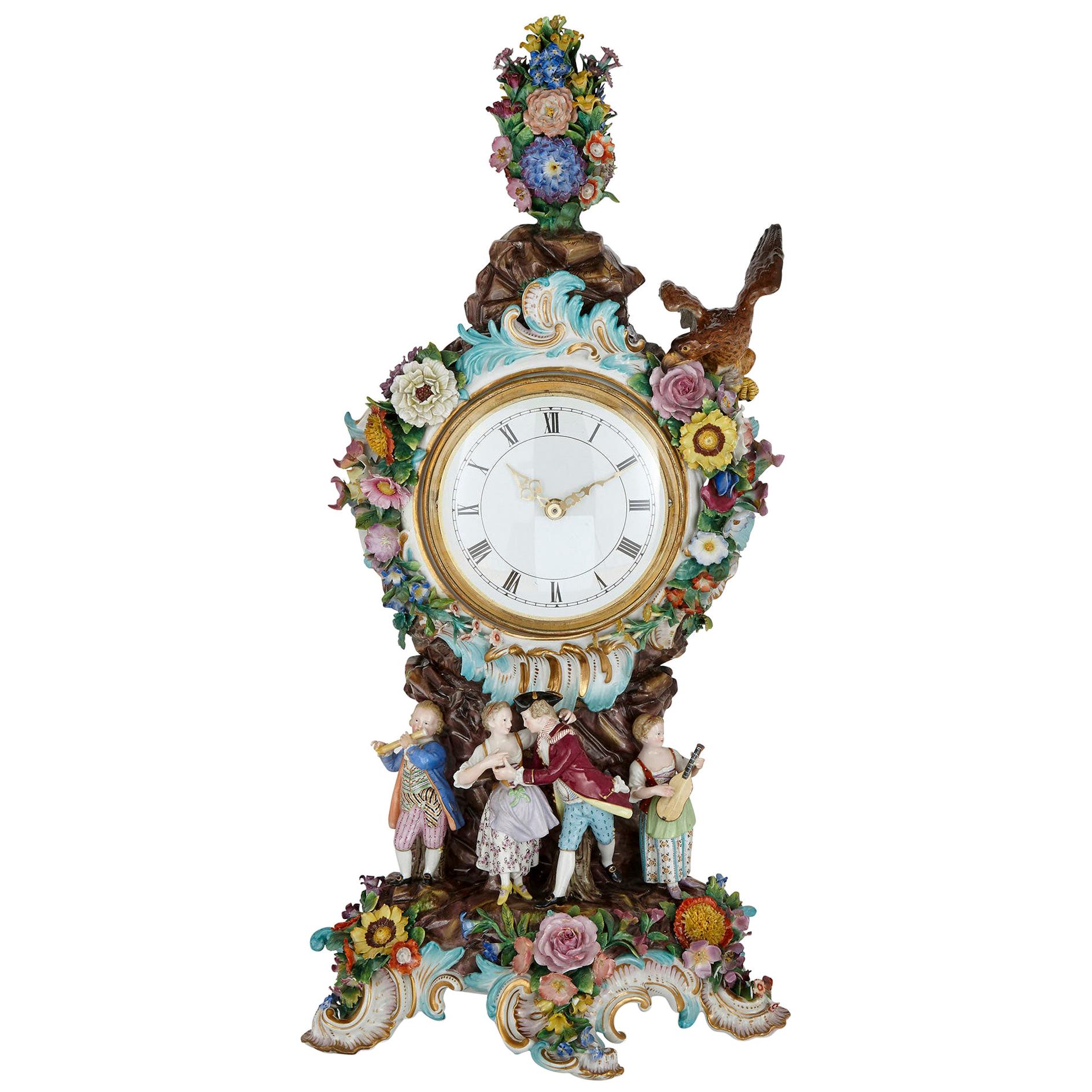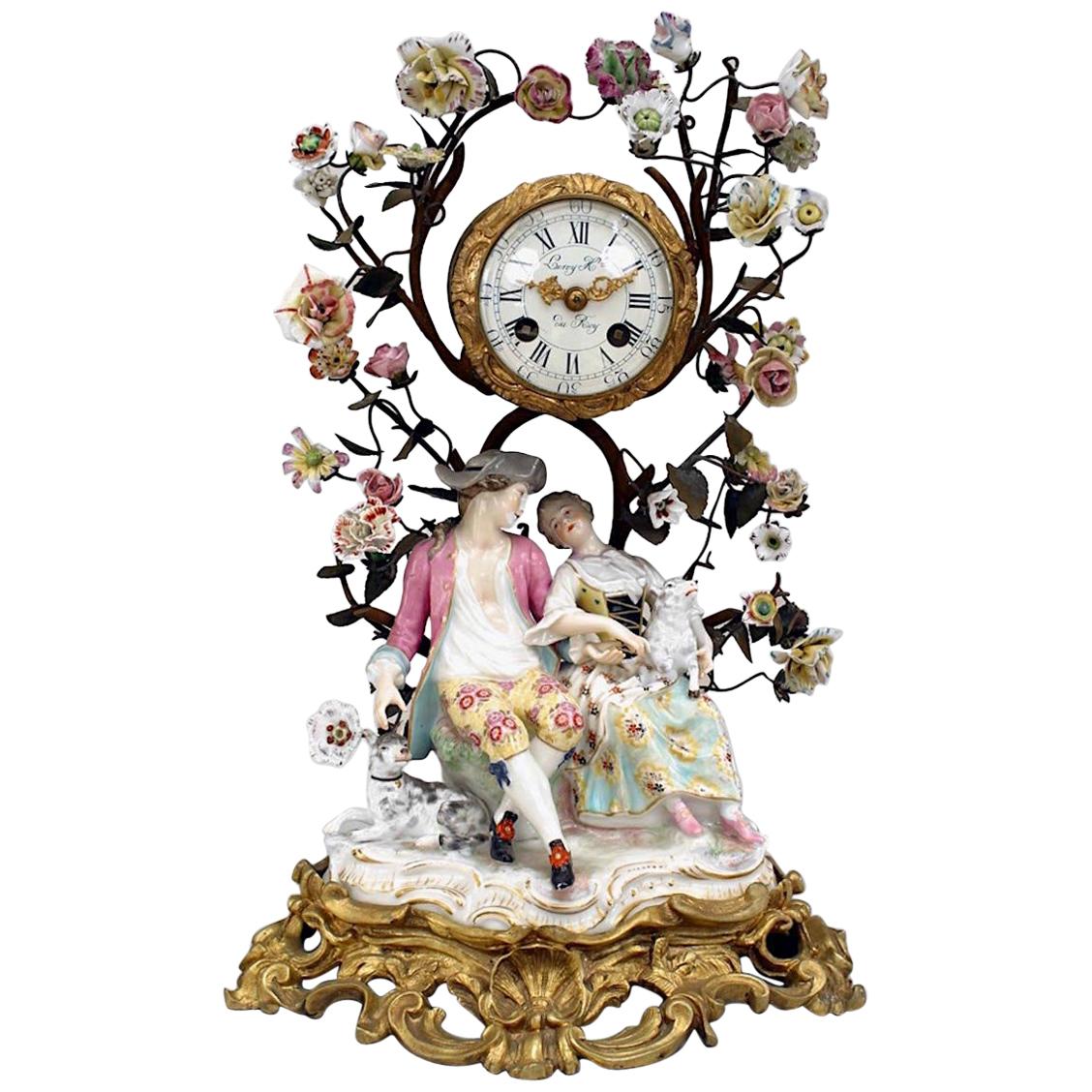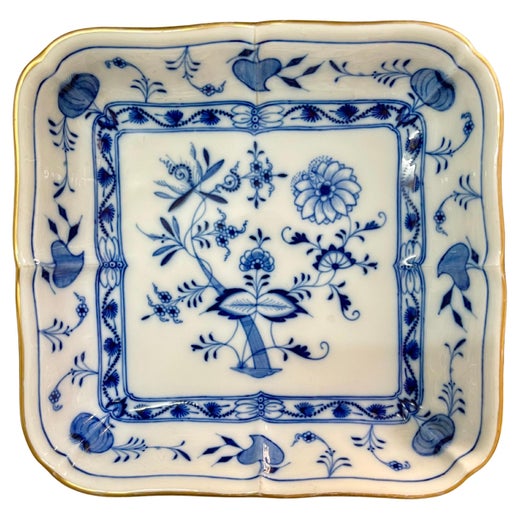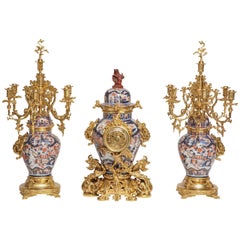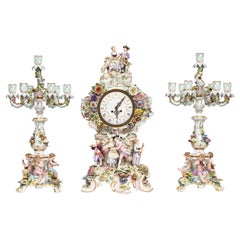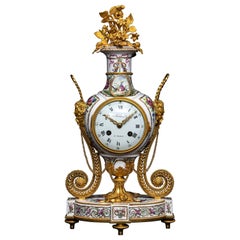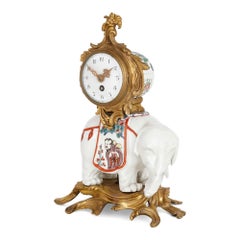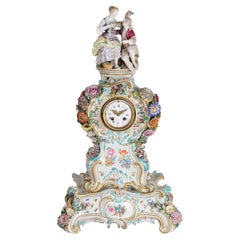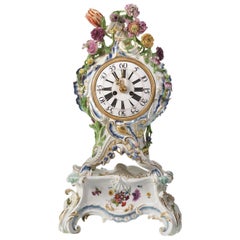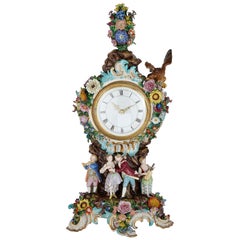Louis XV Ormolu Mntd. Meissen Porcelain Chinoiserie Elephant Clock w/ Snail
Angaben zum Objekt
- Schöpfer*in:Meissen Porcelain (Hersteller*in)
- Maße:Höhe: 31,75 cm (12,5 in)Breite: 24,13 cm (9,5 in)Tiefe: 10,16 cm (4 in)
- Stil:Chinoiserie (Im Stil von)
- Materialien und Methoden:
- Herkunftsort:
- Zeitalter:
- Herstellungsjahr:1750's
- Zustand:Repariert: The clock is in good condition for its age and use, the yellow porcelain clock case has old professional restoration which is not visible at all, and minor expected small chips to the flowers due to age and normal wear, clock is ready to be placed. Am Original vorgenommene Ergänzungen oder Änderungen: Minor restoration which is noted in the images to the side of the clock case. Professionally restored,. Abnutzung dem Alter und der Nutzung entsprechend.
- Anbieterstandort:New York, NY
- Referenznummer:1stDibs: LU919545303972
Meissen Porcelain
Meissen Porzellan (Staatliche Porzellan-Manufaktur Meissen) ist eine der bedeutendsten Porzellan-Manufakturen in Europa und war die erste, die echtes Porzellan außerhalb Asiens herstellte. Es wurde 1710 unter der Schirmherrschaft von König August II. "dem Starken" von Sachsen-Polen (1670-1733) gegründet, einem eifrigen Sammler von asiatischer Keramik, insbesondere Ming-Porzellan.
Um seiner Leidenschaft nachzugehen, die er als "maladie de porcelaine" bezeichnete, gab Augustus enorme Summen aus und sammelte etwa 20.000 Stücke japanische und chinesische Keramik. Zusammen mit Beispielen aus dem frühen Meißen bilden sie die Porzellansammlung des Zwinger, in Dresden.
Der König war jedoch entschlossen, den europäischen Markt von seiner Abhängigkeit von asiatischen Importen zu befreien und den europäischen Kunsthandwerkern die Freiheit zu geben, ihre eigenen Porzellandesigns zu entwerfen. Zu diesem Zweck beauftragte er den Wissenschaftler Ehrenfried Walther von Tschirnhaus und den aufstrebenden Alchemisten Johann Friedrich Böttger mit der Aufgabe, aus einheimischen Materialien echtes Hartporzellan herzustellen (im Gegensatz zum Weichporzellan, das die europäischen Keramiker in den Niederlanden, Deutschland, Frankreich, Italien und Spanien seit der späten Renaissance hergestellt hatten). Im Jahr 1709 gelang den beiden genau das, indem sie Kaolin oder "Porzellanerde" verwendeten. Ein Jahr später wurde die Meissener Fabrik gegründet.
In den ersten Jahrzehnten orientierte sich Meissen vor allem an asiatischen Vorbildern und produzierte japanische Kakiemon-Keramik und Stücke mit chinesisch inspirierten Dekoren genannt Chinoiserie. In den 1720er Jahren ließen sich die Maler von den Werken Watteaus und den Szenen aus dem höfischen Leben, den Früchten und Blumen inspirieren, die die modischen Textilien und Tapeten zierten. In dieser Zeit führte Meissen sein berühmtes kobaltblaues Logo mit den gekreuzten Schwertern ein - abgeleitet vom Wappen des Kurfürsten von Sachsen als Erzmarschall des Heiligen Römischen Reiches -, um seine Produkte von denen der konkurrierenden Fabriken zu unterscheiden, die in ganz Europa aus dem Boden schossen.
In den 1730er Jahren beherrschten die Meissener Modelleure und Dekorateure den Stil der asiatischen Keramik, und Augustus ermutigte sie, eine neue, originelle Ästhetik zu entwickeln. Der Direktor der Fabrik, Graf Heinrich von Brühl, nutzte die botanischen Zeichnungen von Johann Wilhelm Weinmann als Grundlage für eine neue Warenserie mit Oberflächendekor im europäischen Stil. Das Blaue Zwiebelmuster, das erstmals 1739 hergestellt wurde, vereinte asiatische und europäische Einflüsse. Es lehnte sich eng an die Muster des chinesischen unterglasurblauen Porzellans an, ersetzte aber exotische Flora und Früchte durch westliche Sorten (wahrscheinlich Pfirsiche und Granatäpfel, nicht Zwiebeln) sowie Pfingstrosen und Astern.
Zur gleichen Zeit begann der Chefmodellierer Joachim Kändler (1706-75) mit der Herstellung filigraner Porzellanfiguren nach dem Vorbild der italienischen Commedia dell'arte. Diese Figuren, die häufig als Tafelaufsätze auf Banketttischen verwendet und so dekoriert wurden, dass sie die neueste Mode in der höfischen Kleidung für Männer und Frauen widerspiegelten, waren zu ihrer Zeit sehr beliebt und zählen noch heute zu den ikonischsten Kreationen Meißens. Kändler schuf auch das Schwanenservice, das mit seiner komplexen Flachrelief-Oberflächengestaltung und dem minimalen Dekor als ein Meisterwerk der Barockkeramik gilt.
Das Aufkommen des Neoklassizismus in der zweiten Hälfte des 18. Jahrhunderts zwang Meissen, die künstlerische Richtung zu ändern und monumentale Vasen, Uhren, Kronleuchter und Kandelaber zu produzieren. Im 20. Jahrhundert ergänzte Meissen sein Repertoire aus dem 18. Jahrhundert um dezidiert moderne Entwürfe, darunter solche im Stil des Jugendstils. In den 1920er Jahren wurden zahlreiche Tierfiguren eingeführt, wie zum Beispiel der beliebte Fischotter, der in den 1960er Jahren eine ostdeutsche Briefmarke zierte. Ab 1933 wurde die künstlerische Freiheit in der Fabrik unter dem Naziregime eingeschränkt, und nach dem Zweiten Weltkrieg, als die Region Teil Ostdeutschlands wurde, kämpfte sie darum, ihre elitäre Vergangenheit mit den Werten der kommunistischen Regierung in Einklang zu bringen. 1969 jedoch führte der neue künstlerische Leiter Karl Petermann die frühen Entwürfe wieder ein und förderte ein neues Maß an künstlerischer Freiheit. Meissen wurde zu einem der wenigen Unternehmen, die in Ostdeutschland erfolgreich waren.
Seit der Wiedervereinigung im Jahr 1990 im Besitz des Freistaates Sachsen, produziert Meissen weiterhin seine klassischen Designs sowie neue, die in Zusammenarbeit mit Künstlern aus aller Welt entwickelt werden. Darüber hinaus hat die Fabrik im Rahmen ihres artCAMPUS-Programms namhafte Keramikkünstler wie Chris Antemann und Arlene Shechet eingeladen, in ihren Studios in Zusammenarbeit mit ihren erfahrenen Modellierern und Malern zu arbeiten. Die so entstandenen zeitgenössischen Skulpturen sind von dem reichen und komplexen Erbe Meißens inspiriert.
Finden Sie eine Sammlung von authentischem Meissener Porzellan auf 1stDibs.
- VersandAngebot wird abgerufen …Versand von: New York, NY
- Rückgabebedingungen
Mehr von diesem*dieser Anbieter*in
Alle anzeigenAntik, 1860er, Französisch, Chinoiserie, Tisch- und Schreibtischuhren
Bronze
Antik, 1760er, Deutsch, Louis XVI., Kaminuhren
Bronze
Antik, 19. Jahrhundert, Deutsch, Rokoko, Tisch- und Schreibtischuhren
Porzellan
Antik, 1780er, Französisch, Louis XVI., Kaminuhren
Bronze
Antik, 1870er, Französisch, Japonismus, Kaminuhren
Goldbronze
Antik, 18. Jahrhundert, Deutsch, Louis XV., Porzellan
Goldbronze
Das könnte Ihnen auch gefallen
Antik, Spätes 19. Jahrhundert, Französisch, Chinoiserie, Kaminuhren
Goldbronze
Antik, 19. Jahrhundert, Deutsch, Kaminuhren
Porzellan
Antik, 18. Jahrhundert, Französisch, Rokoko, Kaminuhren
Porzellan
Antik, 19. Jahrhundert, Deutsch, Rokoko, Kaminuhren
Porzellan
Antik, 19. Jahrhundert, Deutsch, Neoklassisch, Kaminuhren
Bronze
Antik, Spätes 19. Jahrhundert, Französisch, Rokoko, Kaminuhren
Goldbronze
